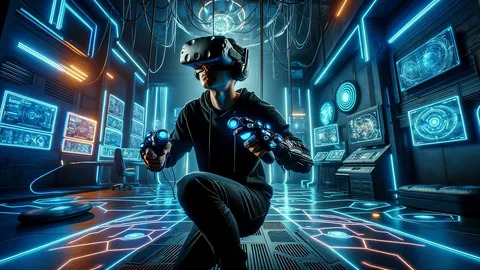Video games have grown from simple pixelated experiences into one of the largest entertainment industries in the world. What started as experimental arcade machines in the 1970s has now become a cultural, social, and technological phenomenon, shaping how people play, connect, and even learn. Today, gaming is no longer just a pastime—it is a global industry worth billions, influencing art, technology, education, and even mental health.
The Evolution of Video Games
The first recognizable video games, such as Pong and Space Invaders, were simple yet revolutionary. They introduced people to the idea of interacting with a screen instead of passively watching it. By the 1980s and 1990s, consoles like the Nintendo Entertainment System and the Sony PlayStation brought games into homes, while PCs opened the door to more complex genres such as strategy and simulation.
The 2000s pushed gaming into the mainstream. High-definition graphics, online multiplayer, and handheld devices expanded the audience. Today, the industry thrives on cutting-edge innovations like virtual reality, cloud gaming, and artificial intelligence, offering immersive experiences that were once unimaginable.
The Social Impact of Gaming
Video games are more than entertainment—they are a form of social interaction. Multiplayer games and online platforms allow friends (and strangers) to connect, collaborate, and compete regardless of distance. Esports tournaments attract millions of viewers worldwide, rivaling traditional sports in popularity.
For many, gaming communities provide a sense of belonging. Players can join clans, guilds, or servers where they share experiences, build friendships, and sometimes even develop professional opportunities.
The Educational Value of Video Games
Contrary to the outdated belief that naga15 only waste time, modern studies show that video games can enhance cognitive skills. Strategy and puzzle games sharpen problem-solving and critical thinking. Simulation games teach resource management and decision-making. Even fast-paced action games can improve reflexes and multitasking abilities.
Educators are also adopting gamification techniques—borrowing elements of video game design—to make learning more engaging. From history lessons told through interactive narratives to language learning apps designed like role-playing games, the potential for education is vast.
The Challenges in the Gaming World
Despite its benefits, gaming is not without challenges. Concerns about addiction, excessive screen time, and exposure to violent content have sparked debates among parents, researchers, and policymakers. Developers are now including parental controls, screen time trackers, and content filters to address these issues.
Another challenge is inclusivity. While gaming communities are diverse, the industry has faced criticism for lack of representation and toxic behavior online. Thankfully, more developers are creating inclusive characters, and platforms are working to build safer environments for all players.
The Future of Video Games
The future of gaming looks exciting. Cloud gaming services are making high-quality games accessible without expensive hardware. Virtual and augmented reality are blending digital worlds with physical spaces. Artificial intelligence is enabling smarter, more adaptive game design.
In addition, the lines between gaming and other industries are blurring. Fashion brands, musicians, and filmmakers collaborate with game developers to create crossover experiences. The rise of the metaverse—a shared digital universe—promises to take gaming beyond the screen into a fully interactive lifestyle.
Conclusion
Video games are no longer just a hobby for children or teenagers. They are a global culture, a business, and even a tool for learning and creativity. With technology advancing rapidly, the future of gaming is bound to be even more immersive and impactful. Whether you are a casual player or a competitive esports enthusiast, one thing is certain: video games are here to stay, shaping not just how we play, but how we live.


